「文豪」という言葉から、あなたはどのような人物を想像するでしょうか。もしそのイメージが、ただ謹厳実直なだけのものであれば、谷崎潤一郎の文学世界は、その概念を鮮やかに覆すかもしれません。彼は、その生涯を通じて「美」の探求に身を捧げ、西洋の近代文化への憧れから、日本の古典的な伝統美への回帰まで、ダイナミックな変遷を遂げた作家です。彼の作品は、ときにスキャンダラスなまでの官能性を放ち、人間の業や欲望の深淵を大胆に描き出しました。
- 「悪魔主義」と「聖なる悪女」:彼の文学を貫く、破滅的でありながらも崇拝の対象となる「ファム・ファタール(運命の女)」への執着と、人間の暗部を美として描く独特の世界観。
- 関東大震災という名の転換点:ハイカラな西洋文化の中心地・東京から、伝統が息づく関西への移住が、彼の美意識を根底から変えた決定的な出来事。
- 「陰翳礼讃」に込められた美学:西洋の「光」の文化と対比させながら、日本の伝統建築や器、芸能に宿る「影」の豊かさを説き、彼の後半生の創作活動の指針となった美の哲学。
文壇を挑発した「悪魔」の誕生
1886年、東京・日本橋の裕福な商家に生まれた谷崎潤一郎は、何不自由ない環境で育ち、幼い頃から文学に親しみました。東京帝国大学国文科に進学した彼は、在学中から創作活動を始め、友人らと第二次『新思潮』を創刊します。そこに発表した短編『刺青(しせい)』が、耽美派の大家・永井荷風に絶賛されたことで、文壇に鮮烈なデビューを果たしました。
彼の初期の作品は、人間の内に潜む倒錯的な欲望や、エロティシズム、マゾヒズムといったテーマを扱い、その背徳的な内容から「悪魔主義(ディアボリズム)」と呼ばれました。美しい女性の足に踏まれたいという願望や、殘虐さと美が一体となった世界観は、当時の文壇に大きな衝撃を与え、彼は一躍「恐るべき新人」として注目される存在となったのです。
西洋への憧憬と『痴人の愛』
初期の谷崎が描く「美」は、西洋の文化と強く結びついていました。当時の日本、特に東京は、西洋の文化が怒涛のように流れ込み、映画やカフェ、洋装といったモダンな生活様式が花開いた時代でした。谷崎自身も西洋の文物に深く魅了され、その憧れは創作活動にも色濃く反映されます。
その集大成ともいえるのが、1924年に発表された『痴人の愛』です。真面目な会社員である譲二が、カフェーの女給で見出した15歳の少女ナオミを、自分好みの「モダンガール」に育て上げようとする物語。しかし、奔放に成長したナオミは、やがて悪女(ファム・ファタール)へと変貌し、譲二を精神的にも経済的にも支配していきます。西洋文化への無批判な崇拝と、それに翻弄される男の悲喜劇を通して、谷崎は時代の空気と人間の愚かさを見事に描き出しました。
関西移住と伝統美の発見
谷崎の人生と文学における最大の転機は、1923年に発生した関東大震災でした。モダン都市・東京が壊滅的な被害を受けたことをきっかけに、彼は関西地方の兵庫県芦屋市へと移住します。この地理的な移動が、彼の価値観に大きな変化をもたらしました。
横浜や東京といったハイカラな港町とは対照的に、京都や奈良、大阪といった関西の地には、日本の伝統的な文化や生活様式、そしてゆったりとした時間が流れていました。谷崎はこの地で、それまで見過ごしていた日本の古典芸能(文楽や歌舞伎)、建築、そして言葉の美しさに目覚めていきます。この時期から彼の作風は一変し、『春琴抄』や『盲目物語』といった、日本の伝統的な世界を舞台にした、格調高い作品群が生み出されていきました。それは、西洋への憧れから、自国の文化の奥深さへと眼差しを向け直す、大きな回帰の始まりでした。
谷崎文学が現代に問いかけるもの
関西に移り住んだ谷崎潤一郎は、日本の伝統美を自らの文学の中で昇華させていきます。その活動の頂点にあるのが、不朽の名作『細雪』と、彼自身の美学の宣言ともいえる随筆『陰翳礼讃』です。特に『細雪』では、第二次世界大戦前の関西の裕福な旧家の四姉妹の日常を、雅な筆致で描き出し、失われゆく日本の生活文化への挽歌として高い評価を受けました。
生涯にわたって何度もノーベル文学賞の候補に挙げられながら、1965年にその生涯を閉じた谷崎。彼の文学は、西洋と東洋、近代と伝統、官能と精神といった両極の間を揺れ動きながら、常に「美とは何か」を問い続けました。その作品群は、日本人が持つ美意識の深層を解き明かす鍵として、今なお多くの読者を魅了し続けています。
解説ポイント①:「悪魔主義」と「聖なる悪女」:彼の文学を貫く女性崇拝と官能の世界
谷崎文学の初期を特徴づける「悪魔主義」とは、単なる背徳的な趣味を指すのではありません。それは、人間の道徳や理性の裏側に隠された、倒錯的で強烈な欲望やエロスを、一種の「美」として積極的に描き出す思想です。その中心に常に据えられているのが、「聖なる悪女(ファム・ファタール)」の存在です。谷崎の描く女性たちは、男を破滅させるほどの魔性を持ちながらも、その美しさゆえに崇拝の対象となります。『痴人の愛』のナオミは、まさにその典型です。主人公の譲二は、ナオミに虐げられ、すべてを搾取されながらも、彼女なしでは生きられないという倒錯した喜びに浸ります。この「女性への絶対的な崇拝」と「マゾヒスティックな快楽」というテーマは、谷崎の生涯を通じて形を変えながら何度も描かれ、彼の文学の根幹をなす重要な要素となっています。
解説ポイント②:関東大震災という名の転換点:西洋への憧れから日本の伝統美への回帰へ
1923年の関東大震災は、谷崎にとって単なる被災体験以上の意味を持ちました。震災によって物理的に破壊されたのは、彼が愛したモダン都市・東京の風景であり、それは同時に、彼の心の中にあった西洋近代文化への無条件の憧憬そのものでした。震災を機に移り住んだ関西(阪神間)は、彼に新たな発見をもたらします。そこには、東京のような急速な西洋化の波に洗われず、日本の伝統が生活の中に息づく世界が広がっていました。彼は大阪弁の響きに魅了され、義太夫や上方舞といった古典芸能に深く傾倒し、京都や奈良の古寺を巡るようになります。この経験が、彼の目を内なる日本へと向けさせました。その最も象徴的な仕事が、日本文学の最高傑作である『源氏物語』の現代語訳です。西洋文学に匹敵する、あるいはそれ以上の豊かな物語世界が自国にあることを再認識したこの大事業は、彼の文学が伝統へと回帰する決定的な一歩となりました。
解説ポイント③:「陰翳礼讃」に込められた美学:光と影の対比で読み解く日本の伝統的価値観
随筆『陰翳礼讃』は、谷崎の後期文学を理解するための必読書です。彼はこの中で、あらゆるものを徹底的に明るく照らし出す西洋の「光」の文化に対し、日本の美は「陰翳(いんえい)」、つまり薄暗い影の中にこそ見出されると説きます。例えば、日本の伝統家屋の深い軒が生み出す薄闇、蝋燭の光にぼんやりと浮かび上がる金蒔絵の器、能舞台の幽玄な暗がりなどを挙げ、そこにはざらざらとした、奥行きのある美が存在すると主張します。彼は、電灯のようにすべてを白日の下に晒すのではなく、あえて影を残すことで、想像力がかき立てられ、ものの本質が豊かに感じられると考えました。この「影の哲学」は、彼の後期の小説、特に『春琴抄』の耽美的な世界や、『細雪』で描かれる日本の伝統的な生活の細やかな描写に、色濃く反映されています。それは、近代化の名の下に日本人が失いつつある価値観を、もう一度見つめ直そうとする力強いメッセージなのです。
参考文献
- 谷崎潤一郎の生涯と作品:『痴人の愛』『細雪』など代表作から探るその魅力 – TRANS.Biz
- 谷崎潤一郎 | 芦屋市谷崎潤一郎記念館
- 文豪・谷崎潤一郎の作品に触れる。関西でゆかりの地をめぐる旅 – A Trip to Feel Works of the Great Writer Junichiro Tanizaki at His Favorite Places in Kansai –
- 谷崎潤一郎「陰翳礼讃」あらすじと解説。日本古来の「闇」の美学とは – 文学WEB
- 【代表作6選】谷崎潤一郎とは?作風や経歴を分かりやすく解説 – しろくま無添加書評
【English Article】
From Diabolism to Shadowed Beauty: The World of Sensuality and Tradition in Jun’ichiro Tanizaki’s Literature
What kind of person do you imagine when you hear the term “great literary master”? If your image is one of solemn integrity alone, the literary world of Jun’ichiro Tanizaki might brilliantly overturn that notion. He was an author who dedicated his life to the pursuit of “beauty,” undergoing a dynamic evolution from an adoration of modern Western culture to a return to classical Japanese tradition. His works, at times, exude a scandalous sensuality, boldly depicting the depths of human karma and desire.
- Diabolism and the “Holy Wicked Woman”: His unique worldview, which permeates his literature, centers on an obsession with the “femme fatale”—a destructive yet worshipped figure—and portrays the dark side of humanity as a form of beauty.
- The Turning Point Called the Great Kanto Earthquake: His move from Tokyo, the center of fashionable Western culture, to the tradition-rich Kansai region after the earthquake fundamentally altered his aesthetic sensibilities.
- The Aesthetics of “In Praise of Shadows”: Contrasting the Western culture of “light,” he articulated the richness of “shadow” found in traditional Japanese architecture, crafts, and performing arts, a philosophy of beauty that guided his later creative work.
The Birth of the “Devil” Who Provoked the Literary World
Born in 1886 into a wealthy merchant family in Nihonbashi, Tokyo, Jun’ichiro Tanizaki grew up in comfort and developed a love for literature from a young age. While studying Japanese literature at Tokyo Imperial University, he began his creative activities, co-founding the second iteration of the literary magazine “Shinshichō” (New Currents of Thought). His short story “The Tattooer,” published there, was lavishly praised by the great aesthete Kafū Nagai, marking his sensational debut in the literary world.
His early works dealt with themes of perverse desires, eroticism, and masochism lurking within human nature. Due to their immoral content, his style was dubbed “diabolism.” His worldview, which united cruelty and beauty, and his expressed desire to be stepped on by a beautiful woman’s foot, sent shockwaves through the literary establishment of the time, and he quickly became known as a “formidable newcomer.”
Adoration for the West and “Naomi”
The “beauty” depicted by the early Tanizaki was strongly linked to Western culture. Japan at that time, especially Tokyo, was a place where Western culture was flooding in, and a modern lifestyle featuring movies, cafés, and Western clothing was blossoming. Tanizaki himself was deeply fascinated by Western objects and customs, and this admiration was vividly reflected in his creative work.
The culmination of this period can be said to be Naomi (Chijin no Ai), published in 1924. It is the story of Jōji, a serious office worker, who tries to raise a 15-year-old café waitress named Naomi into his ideal “modern girl.” However, the free-spirited Naomi eventually transforms into a femme fatale, dominating Jōji both mentally and financially. Through the tragicomedy of a man’s uncritical worship of Western culture and his subsequent torment, Tanizaki masterfully depicted the atmosphere of the era and the folly of human nature.
The Move to Kansai and the Discovery of Traditional Beauty
The greatest turning point in Tanizaki’s life and literature was the Great Kanto Earthquake of 1923. With the modern city of Tokyo catastrophically damaged, he moved to Ashiya City in Hyogo Prefecture, in the Kansai region. This geographical relocation brought about a significant change in his values.
In contrast to the fashionable port cities of Yokohama and Tokyo, the Kansai region—with Kyoto, Nara, and Osaka—was steeped in traditional Japanese culture, lifestyle, and a more leisurely sense of time. Here, Tanizaki awakened to the beauty of classical Japanese performing arts (like Bunraku puppet theater and Kabuki), architecture, and language, which he had previously overlooked. From this period, his style changed completely, leading to a series of refined works set in the traditional world of Japan, such as A Portrait of Shunkin and A Blind Man’s Tale. It was the beginning of a great return, shifting his gaze from an admiration for the West to the profound depths of his own culture.
What Tanizaki’s Literature Asks of Us Today
After moving to Kansai, Jun’ichiro Tanizaki sublimated Japan’s traditional beauty within his own literature. At the pinnacle of this activity are his timeless masterpiece The Makioka Sisters (Sasameyuki) and his essay In Praise of Shadows (In’ei Raisan), which can be considered a declaration of his own aesthetics. In The Makioka Sisters, in particular, he depicted the daily lives of four sisters from a wealthy, old Kansai family before World War II with an elegant touch, earning high praise as an elegy for a disappearing Japanese way of life.
Nominated for the Nobel Prize in Literature multiple times throughout his life, Tanizaki passed away in 1965. His literature, oscillating between extremes such as West and East, modern and traditional, and sensual and spiritual, constantly questioned the nature of beauty. His body of work continues to fascinate countless readers today as a key to unlocking the depths of the Japanese aesthetic consciousness.
Analysis Point ①: Diabolism and the “Holy Wicked Woman”: The World of Female Worship and Sensuality that Permeates His Literature
The “diabolism” that characterizes Tanizaki’s early literature does not simply refer to an immoral taste. It is an ideology that actively portrays the perverse and intense desires and eros hidden behind human morality and reason as a form of “beauty.” At its center is always the presence of the “holy wicked woman” (femme fatale). The women Tanizaki depicts possess a devilish power to ruin men, yet their beauty makes them objects of worship. Naomi from Naomi is a perfect example. The protagonist, Jōji, while being abused and exploited by Naomi, immerses himself in the perverse joy of being unable to live without her. This theme of “absolute worship of women” and “masochistic pleasure” is a crucial element that forms the foundation of his literature, appearing repeatedly in different forms throughout his life.
Analysis Point ②: The Turning Point Called the Great Kanto Earthquake: From an Adoration of the West to a Return to Traditional Japanese Beauty
For Tanizaki, the 1923 Great Kanto Earthquake was more than just a disaster experience. What was physically destroyed by the earthquake was the landscape of the modern city of Tokyo that he loved, and at the same time, it symbolized the destruction of his unconditional admiration for modern Western culture. The Kansai region (the area between Osaka and Kobe), where he moved after the earthquake, brought him new discoveries. There, he found a world where Japanese tradition was alive in daily life, untouched by the rapid wave of Westernization seen in Tokyo. He was charmed by the resonance of the Osaka dialect, became deeply devoted to classical performing arts like gidayū chanting and kamigatamai dance, and began visiting ancient temples in Kyoto and Nara. This experience turned his eyes inward toward Japan. The most symbolic work of this shift was his modern Japanese translation of The Tale of Genji, the supreme masterpiece of Japanese literature. This monumental project, through which he re-recognized that his own country possessed a rich narrative world rivaling or even surpassing Western literature, was a decisive step in his literature’s return to tradition.
Analysis Point ③: The Aesthetics of “In Praise of Shadows”: Deciphering Traditional Japanese Values Through the Contrast of Light and Shadow
The essay In Praise of Shadows is essential reading for understanding Tanizaki’s later literature. In it, he argues that while Western culture of “light” thoroughly illuminates everything, the beauty of Japan is found within “in’ei,” or dim shadows. He gives examples such as the deep darkness created by the eaves of traditional Japanese houses, the gleam of gold lacquerware floating in the faint light of a candle, and the subtle gloom of a Noh stage, asserting that a rich, textured beauty exists in these spaces. He believed that by deliberately leaving shadows, rather than exposing everything to the glare of electric light, the imagination is stimulated, and the essence of things can be more deeply felt. This “philosophy of shadow” is strongly reflected in his later novels, especially in the aesthetic world of A Portrait of Shunkin and the detailed descriptions of traditional Japanese life in The Makioka Sisters. It is a powerful message urging a re-examination of the values that Japanese people were losing in the name of modernization.
References
- The Life and Works of Jun’ichiro Tanizaki: Exploring His Charm Through Masterpieces like “Naomi” and “The Makioka Sisters” – TRANS.Biz
- Jun’ichiro Tanizaki | The Tanizaki Jun’ichiro Memorial Museum of Literature, Ashiya
- A Trip to Feel Works of the Great Writer Junichiro Tanizaki at His Favorite Places in Kansai – Herenow
- Jun’ichiro Tanizaki’s “In Praise of Shadows” Synopsis and Commentary: The Aesthetics of Ancient Japanese “Darkness” – Bungaku WEB
- 6 Major Works: Who was Jun’ichiro Tanizaki? An Easy-to-Understand Guide to His Style and Career – Shirokuma Mutenka Shohyo


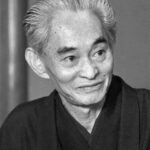
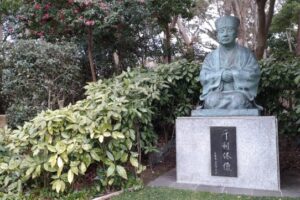
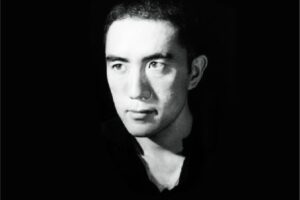
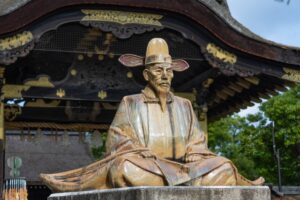
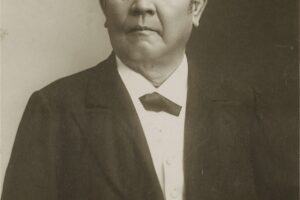
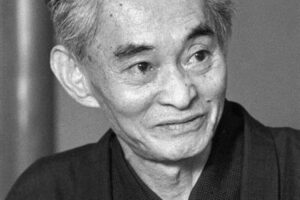
コメントを残す